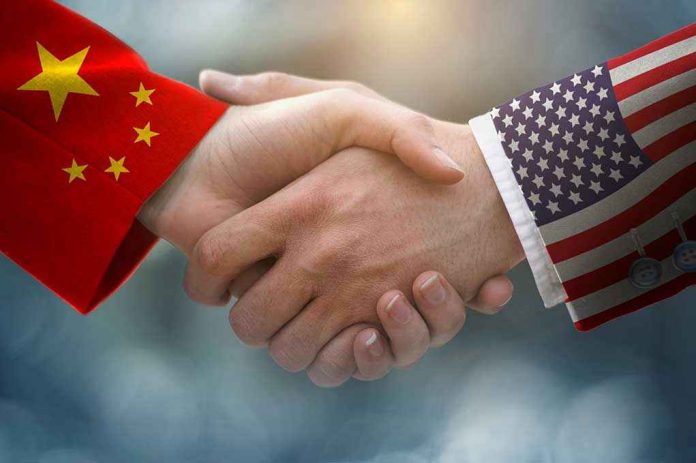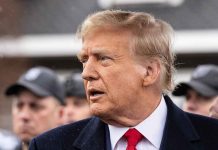
Why are American foundations funding trips to China for our politicians, and who really benefits from these cozy international dealings?
At a Glance
- The Hewlett Foundation sponsored Governor Newsom’s 2023 climate trip to China.
- The foundation has funneled over $112 million to a CCP-affiliated group.
- Newsom’s trip resulted in new climate agreements with China.
- The trip raises questions about foreign influence in U.S. policy.
The Green Curtain: Newsom’s China Trip Exposed
The Hewlett Foundation, a major player in U.S. philanthropy, has once again demonstrated its knack for stirring controversy by funding California Governor Gavin Newsom’s climate-focused trip to China in 2023. This trip, which has been under the microscope, was covered by a $300,000 grant from the foundation. Remember, this isn’t just any foundation—Hewlett has directed a staggering $112 million to Energy Foundation China (EFC), which is closely linked with the Chinese Communist Party (CCP). The optics of this funding have drawn significant scrutiny, especially considering that EFC has been criticized for pushing Chinese strategic interests under the guise of climate advocacy.
Left-Wing Foundation That Funds CCP-Affiliated Green Groups in China Also Paid for Gavin Newsom’s Trip There, Records Show https://t.co/KpqQh17p91
— Marc Morano (@ClimateDepot) July 24, 2025
Newsom’s visit was the first by a U.S. governor to China in over four years. The trip resulted in new agreements with China’s National Development and Reform Commission and several provinces. The California-China Climate Institute (CCCI), chaired by former Governor Jerry Brown, played a pivotal role in planning and supporting the trip. But, as expected, this cozy relationship between California and China has left many questioning the real motives behind this cooperation, especially with the Hewlett Foundation’s financial backing.
Who Pulls the Strings?
Governor Gavin Newsom, known for his climate ambitions, led a delegation to China aiming to bolster climate cooperation and economic ties. The Hewlett Foundation, the trip’s financier, is no stranger to controversy. Their significant financial contributions to EFC, an organization staffed largely by former CCP officials, have long raised red flags. Critics argue that such organizations serve as vessels for CCP influence, possibly shaping U.S. policies to align with Chinese interests. Meanwhile, the CCCI stands as a bridge facilitating these interactions, promoting subnational climate cooperation between California and Chinese authorities.
On the surface, the motivations seem clear. Newsom and his ilk are motivated by climate leadership, economic development, and diplomatic engagement. However, the true power dynamics lie in the influence wielded by the Hewlett Foundation through its funding, which extends its reach into climate NGOs in both nations. It’s a tangled web of interests, with California seemingly eager to play the role of climate diplomat, despite the potential risks of foreign influence.
The Fallout: Agreements and Scrutiny
Newsom’s 2023 journey to China culminated in the “Declaration of Enhanced Subnational Climate Action and Cooperation Between the State of California and the People’s Republic of China.” This milestone declaration is the first of its kind between China and a U.S. state, facilitated by the CCCI. While proponents tout this as a triumph of subnational diplomacy, critics see it as a concerning alliance that warrants scrutiny. While Newsom emphasizes the necessity of U.S.-China climate cooperation, U.S. policymakers and watchdogs are left questioning the implications of such foreign involvement in state-level policy.
The economic, social, and political impacts of these agreements are manifold. On the economic front, there’s potential for increased green technology trade and investment. Socially, enhanced cultural and academic exchanges are on the horizon. Politically, however, the heightened scrutiny of foreign funding and influence in U.S. policy, especially concerning China, cannot be ignored. These developments highlight the broader implications for the green energy sector, which may experience increased collaboration and technology exchange.
The Debate: Cooperation or Conduit?
Proponents of the trip argue that subnational diplomacy is crucial for climate progress. They view the trip as a model for pragmatic climate diplomacy amidst federal-level tensions. However, opponents raise valid concerns about transparency, accountability, and national security. They fear that organizations like EFC may be conduits for CCP influence, manipulating U.S. policy to serve Chinese interests. The Washington Free Beacon’s investigative reporting highlights these concerns, providing a critical lens on the funding’s implications.
Ultimately, the debate over Newsom’s China trip underscores the complex interplay between philanthropy, international diplomacy, and national security concerns. As California embarks on this climate diplomacy journey, the outcomes of these new agreements and ongoing exchanges will likely shape subnational climate cooperation for years to come. Whether these developments are seen as a triumph of diplomacy or a cautionary tale of foreign influence remains to be seen.
Sources:
California-China Climate Institute (UC Berkeley)
Office of Governor Gavin Newsom





